

Collaboration the Key in Theater Restoration
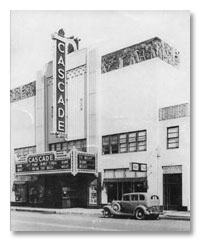
In 1935 Redding, California became home to a showcase movie palace and vaudeville stage the Cascade Theater. The theater went through various modifications over the next 65 years, including division into a multi-screen complex, before closing in the 1990s. In June of 1999 the neglected building was purchased by Southern Oregon University's Jefferson Public Radio (JPR), and a restoration project was born.
The JPR Foundation, a private non-profit organization that supports activities of the radio station, partnered with the Cascade Theater Restoration Committee, a broad-based group of local community leaders, downtown advocates and business people, all committed to the restoration of this classic theater building.
The exterior of the building originally featured a spectacular marquee, Dutch metal frieze and tiled facade, built in the heyday of the American Art Deco period. The tiles had been removed some 20 years earlier, and by the time the building was purchased by the JPR Foundation, only fragments of the original tiles remained. Clearly, some expert assistance would be needed in order to restore the facade of the old building.
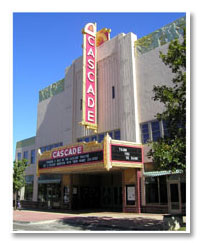
Late in 2001 the restoration project manager contacted Susan S. Werschkul, artist and owner of Illahe Tileworks in Ashland, Oregon. In her studio Werschkul designs and manufactures hand-pressed, hand-painted tiles and specializes in commissioned works including tile restoration.
Since no photographs could be found depicting the original, colorful, art deco tiles, Werschkul began research into manufacturing records and patents. Cooperation and collaboration became central to the theater's restoration, as she joined forces with building architects Trilogy Architecture of Redding, California and George Kramer, a historic preservation consultant.
The original tile was traced through copyright numbers, still visible on the few remaining fragments. Thus, it was determined that the exterior tile was part of the Hermosa line of tile, developed by Proutyline Products of Hermosa Beach, California. This company was purchased by the American Encaustic Tiling Company in 1926 and subsequently sold to Gladding, McBean & Co. in 1933. Surprisingly, a copy of the 1934 Hermosa tile catalog purchased from the Tile Heritage Foundation showed a trim piece identical to a fragment unearthed at the theater site.
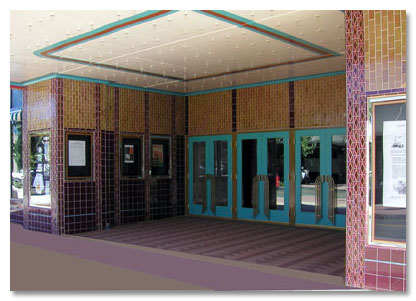
Werschkul then located a contemporary production facility with clay and kilns similar to the original manufacturer. With her designs and specifications the Dirk Elliot Tile Company of Spokane, Washington was able to reproduce the custom trims, detail pieces and a portion of the field tile needed for the theater's facade.
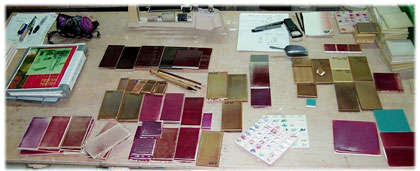
The theater's gold-green field tile and deco tiles posed more of a challenge. The gold-green tiles contained an elusive, red iron speckle in a glossy gold glaze, with green overtones. Numerous glaze tests and modifications were necessary. With the assistance of James Robinson, glaze chemist and consultant, Werschkul achieved the balance of color and quality desired for the project. She was able to reproduce the mysterious red speckle by adding small amounts of ochre, a naturally occurring rnaterial that contains iron and trace amounts of chrome. Because it is a natural material, the color of the ochre differs depending on where it is found. After many batches were tested, a material from the New Riverside Ochre Mine in Georgia was determined to be the most suitable.
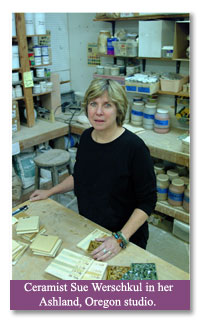
No photos were available to assist in the reproduction of the stunning, three-color deco tiles originally featured on the theater's fašade. George Kramer, the preservation consultant, proposed a triangular design that repeats a vertical pattern found elsewhere in the building. Through collaboration with Werschkul and Illahe Tileworks, these beautiful deco tiles were developed and manufactured. The tiles were first silk screened with a black line to create a diamond within a diamond design on the rectangular 3" x 6" tiles. Each tile was then hand-painted, as it would have been in the 1930s, with three separate glazes. The outcome: a dark burgundy diamond outlined by gold on a lighter burgundy background. Exquisite!
Curt Heitsman of Custom Tile in Anderson, California was responsible for the installation of the tile. However, installation took place only after extensive repairs to the exterior walls of the building. In some cases, walls had to be completely replaced. The theater's poster cases also had to be redesigned and manufactured to replicate the original ones.
Collaboration was the key to the intricate restoration of this magnificent theater. Architects and consultants, tile historians, chemists, historical experts, contemporary tile makers and installers all contributed their expertise to this project, which would have been impossible had it been attempted individually. It's a fitting response to such a grand old building.
Story and photographs submitted by Susan S. Werschkul and Valerie Kitchen, Illahe Tileworks.